|
|
| |
|
|
| |
|
|
|
|
| |
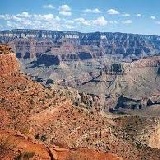 Travel
America Travel
America
Learn before you travel. This section of Fun Easy
English focuses on facts and other cool stuff about
your favorite U.S. state. This is great English
reading practice. This page focuses on the state of
West Virginia. |
 Hey
if you cannot understand something on this page, Hey
if you cannot understand something on this page,
then use the Fun Easy English
dictionary
(opens in a new window) |
|
|
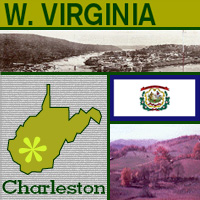 West
Virginia West
Virginia
In 1861, Virginians in the northwestern part of the
state defied Virginia's secession from the United
States. The region chose to remain in the Union and
form a new state. West Virginia was admitted into
the Union in 1863, after conditions requiring the
gradual emancipation of slaves had been met. The
state motto is "Mountaineers are always free," and
West Virginia lives up to its nickname of the
"Mountain State." With an average altitude of 1,500
feet above sea level, it's the highest of any state
east of the Mississippi River. For a long time, West
Virginia was a leading producer of coal in North
America, but many people left to pursue better
employment opportunities. That trend has turned
around, and now the state's economy is in a more
stable condition. The capital is Charleston, and the
state flower is the big rhododendron. |
|
West Virginia
State Flag
The West Virginia flag features the state motto "Montani
Semper Liberi" (Latin for "Mountaineers Are Always Free"), a
wreath of Rhododendron (the state flower), and the state
coat-of-arms (also on the state seal).
The official description for the state flag of West
Virginia: "The proportions of the flag of the State of West
Virginia shall be the same as those of the United States
ensign; the field shall be pure white, upon the center of
which shall be emblazoned in proper colors, the coat-of arms
of the State of West Virginia upon which appears the date of
the admission of the State into the Union, also with the
motto, 'Montani Semper Liberi' (Mountaineers Are Always
Free). Above the coat-of-arms of the State of West Virginia
there shall be a ribbon lettered, 'State of West Virginia,'
and arranged appropriately around the lower part of the
coat-of-arms of the State of West Virginia a wreath of
Rhododendron maximum in proper colors. The field of pure
white shall be bordered by a strip of blue on four sides.
The flag of the State of West Virginia when used for parade
purposes shall be trimmed with gold colored fringe on three
sides and when used on ceremonial occasions with the United
States ensign, shall be trimmed and mounted in similar
fashion to the United States flag as regards fringe, cord,
tassels, and mounting." |
|
Source:
State Symbols USA |
|
|
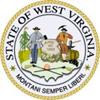 West Virginia
State Facts West Virginia
State Facts
Picture: state seal of West Virginia |
|
State Capital |
Charleston |
|
Nickname |
Mountain State |
|
Motto |
Montani Semper Liberi (Mountaineers Are Always Free) |
|
Statehood |
June 20, 1863 (35th) |
|
Origin of Name |
Name given to western counties of Virginia which
refused to secede in 1863" |
|
Largest Cities |
Charleston, Huntington, Wheeling, Parkersburg,
Morgantown |
|
Border States |
Kentucky, Maryland, Ohio, Pennsylvania, Virginia |
|
Area |
24,087 sq. mi., 41st largest |
|
State Bird |
Cardinal |
|
State Flower |
Big Rhododendron (rhododendron maximum) |
|
State Tree |
Sugar Maple (acer saccharum) |
|
State Song |
West Virginia, My Home, Sweet Home, The West
Virginia Hills, This Is My West Virginia |
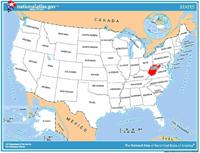 Travel and tourism site
for West Virginia - This state travel and territorial
tourism site provides ideas for your vacations, meetings, and more. Travel and tourism site
for West Virginia - This state travel and territorial
tourism site provides ideas for your vacations, meetings, and more. |
|
|
West Virginia Stories |
|
|
West Virginia Italian
Heritage Festival
What is boccie? Boccie, or bocce (pronounced "bah-chee")
is an Italian bowling game usually played outside.
Boccie is played on a court, also called a campo,
that is about 75 feet long by 8 feet wide, enclosed
with raised sides. Players can play individually or
on teams. Each player or team rolls four bocce balls
(4 to 5 inches in diameter), toward a smaller ball,
called the boccino, or pallino. The object is to
roll the ball closer to the pallino than an
opponent's ball. When all balls have been played, it
is the end of the frame. A team is awarded one point
for every ball that is closer to the pallino than
the nearest opposing ball. A team may score up to
four points per frame.
Boccie was popular with many of the thousands of
Italian immigrants who came to America in the early
1900s. Coal mining companies recruited many Italians
to work in the deep mines of West Virginia; others
found work on railroads and farms. The West Virginia
Heritage Festival was founded to preserve and
present Italian cultural traditions for new
generations. This festival is held in Clarksburg,
West Virginia, on Labor Day weekend. The festival
includes authentic Italian dancers, Italian
religious observances, strolling minstrels, and, of
course, a bocce tournament. |
|
|
The Vandalia Gathering
Can you flat-foot?
Flat-footing is a traditional dance in which
dancers' feet are kept flat as they make some very
fancy moves. There are many styles of flat-foot
dance, and visitors can see some of them at the
Vandalia Gathering in Charleston, West Virginia,
every Memorial Day weekend. The outdoor flat-footing
stage is a highlight, and spectators are encouraged
to jump in and kick up their heels.
Since 1976, the Vandalia Gathering has brought
together dancers, musicians, storytellers, and
craftspeople from small communities and isolated
valleys to showcase their talents.
One of these performers is Melvin Wine, a fiddler
and recipient in 1981 of the first Vandalia Award,
West Virginia's highest folklore honor. He was born
in 1909 in Braxton County, West Virginia. He learned
many of his old fiddle tunes from his great-uncle
and father, who had learned from his grandfather.
The Vandalia Gathering is the place to be if you
want to do a little dance, listen to a little music
or hear a good story. |
|
|
Winter Festival of Waters
(Berkeley Springs)
George Washington -- surveyor, farmer, hero of the
Revolutionary War, first president of the United
States, and founder of the country's first spa.
That's right -- a spa!
In 1748, when George Washington was a young
surveyor, he visited warm springs on the frontier.
The area was already well known to the Indians, who
traveled from as far away as Canada and the
Carolinas to bathe in the warm water bubbling up
from the mountain springs. In 1776, Washington and
some friends established the town of Bath, West
Virginia, for the purpose of entertaining those who
came to bathe.
Although the town's official name is still Bath,
since the early 19th century it has been known as
Berkeley Springs. It is still an oasis for those in
search of a spa or a mineral spring. Every winter
the town hosts a three-month celebration of the
healing power of water. One of the events is the
Berkeley Springs International Water Tasting
Competition. Water from around the world is tasted
at this competition, including tap water from more
than 50 municipal facilities.
Other events include George Washington's Bathtub
Celebration. There are readings from George
Washington's diaries about his visits to Bath.
People are taken along Washington's favorite
walkways around town, to the bathtub monument in the
state park and to the inn where Washington slept. So
head to Berkeley Springs and see the place where
George Washington bathed. |
|
|
Harpers Ferry, West Virginia
The small town of Harpers Ferry, West Virginia,
played a significant role in United States history,
even before the state of West Virginia separated
from Virginia during the Civil War. In 1859, John
Brown, an abolitionist, (someone who wanted to see
slavery abolished), led a raid on the town. He hoped
to use weapons seized from the U.S. Armory and
Arsenal to free slaves in the area. Brown then
planned to launch similar raids elsewhere from the
surrounding hills. He did not succeed, but the raid
contributed to tensions leading to the Civil War.
During the Civil War, both the Confederate and the
Union armies wanted control of Harpers Ferry. Not
only did it have an arsenal and armory (a place to
store weapons), but also the town was located at the
meeting point of important railroads and at the
meeting of the Shenandoah and Potomac rivers. In
fact, Harpers Ferry changed hands eight times during
the war, which shows just how much both sides wanted
to control it. |
|
|
Fasnacht in Helvetia
Did you know that West Virginia has its own version
of Mardi Gras?
The period before Ash Wednesday is celebrated in New
Orleans and elsewhere as Mardi Gras, but in
Helvetia, West Virginia, the local people celebrate
Fasnacht. Swiss immigrants brought this celebration
to Helvetia in the 19th century. Fasnacht is a
combination of the celebrations of Mardi Gras and
the Winterfest of Switzerland, where Old Man Winter
is burned in effigy to speed up the coming of
spring. (An effigy is a crude model of a person or
thing, usually someone or something that is
disliked.) The focus of the holiday in Helvetia is
also on scaring away winter.
On the Saturday night before Ash Wednesday, the
people of Helvetia put on scary masks and decorate
their homes with scary figures to frighten away Old
Man Winter. Then they gather at a local restaurant,
light colorful lanterns, and walk to the community
hall, where they parade around the dance floor as
their masks are judged. They dance until midnight,
when the fiddler announces it is time to burn Old
Man Winter. The prettiest girl gets on the shoulders
of the tallest man and cuts down the effigy of Old
Man Winter that is hanging in the middle of the
room. They drag it out into the snow, rough it up,
and throw it onto a bonfire, showing that it's time
for winter to end! |
|
|
Thunder in the Valley
There is a city in West Virginia that changed
control between the Union and Confederate forces
during the Civil War 18 times!
"Thunder in the Valley," is an annual event in
Charles Town, West Virginia, to help remember its
Civil War heritage. During the Civil War, the
Shenandoah Valley was a strategic area, as it was on
the main travel route north and south. Control of
Charles Town changed hands 18 times while another
town in the valley, Harpers Ferry, changed hands
eight times.
During "Thunder in the Valley," battle re-enactments
are staged. People dress up as Union and Confederate
soldiers, set up replicas of Union and Confederate
camps, and re-create the brief fights and battles
that took place during the Civil War. One of the
re-enactments is the invasion of Charles Town by
Confederate General John Imboden. People dress up as
Union and Confederate soldiers and take up positions
in the town for the re-enactment.
Although the thunder of battle is not as loud in the
re-enactment as it must have been in the real
battle, the smoke, noise and movement of soldiers
still gives a good idea of what the invasion was
like. |
|
|
The Mountain Weavers Guild
and Fiber Art Traditions in the Potomac Highlands
Look at the clothes you are wearing. Everything is
made of some kind of woven fabric. Did you know that
before the days of machines, fabric was woven by
hand?
Weaving is the interlacing of two strands of yarn so
that they cross each other. Weaving can also be done
on a device called a handloom. In the Potomac
Highlands of West Virginia, the Mountain Weavers
Guild keeps the tradition of hand weaving alive.
Members of the guild are assisted by instructors at
the Augusta Heritage Center and sponsored by Davis
and Elkins College in Elkins, West Virginia.
Beginning and intermediate weavers learn how to
thread a loom, wind a warp (lengthwise yarn), and
weave on different types of looms. Advanced weavers
explore more detailed weaves and designs. The
history of weaving and the study of fibers and
threads are also covered. There are so many
different kinds of weaves, including satin, twill,
jacquard, and ribbed, that there is plenty to learn.
If you think about all the clothes you wear and all
the different fabrics, just imagine learning how to
weave each of them!
Today there are still people interested in the art
of hand weaving -- hand woven fabric is highly
valued and often considered an art form. |
|
Source:
Library of Congress |
|
 National
Forests of West
Virginia National
Forests of West
Virginia
The following is a description of national
forests in the state
of West Virginia. There are no national
parks or monuments in this state. If you plan to visit or
live in West Virginia for awhile then you
should definitely plan to visit some of
these fantastic places. |
|
|
|
National Forests |
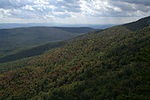 George
Washington & Jefferson George
Washington & Jefferson
In the Appalachian Mountains, the highest
point of the forest is Mount Rogers, also
the highest point in Virginia at 5,729 ft
(1,746 m) in Mount Rogers National
Recreation Area. There are 230,000 acres
(93,000 ha) of old-growth forest here, and
the Blue Ridge Parkway and Appalachian Trail
both run through the forest. This national
forest is also partially located in the
states of Kentucky and Virginia. |
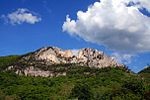 Monongahela Monongahela
Monongahela National Forest includes Spruce
Knob-Seneca Rocks National Recreation Area
and eight wilderness areas. Spruce Knob is
the highest point in West Virginia at 4,863
ft (1,482 m), and Seneca Rocks is a 900 ft
(270 m) quartzite crag. |
|
|
|
|
|
|
|
|
|
|
|
|
Cool America |
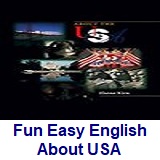 About the U.S.A. About the U.S.A.
About the U.S.A. is an American
Studies reader that examines the customs, government, and history of the
United States of America. The text provides a wealth of information on U.S.
geography and history; the roles of local, state, and federal government;
national holidays and symbols; the Constitution; and citizenship. The book,
which was written for intermediate to advanced learners of English, contains
a range of activities for language students to practice listening, speaking,
reading, and writing. (opens to a new PDF window)
Great English reading
practice. |
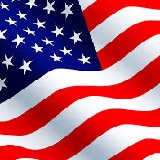 About
America About
America
Learn about the fascinating history and government of
the United States of America. Lessons include content on
American Government, American History, and Integrated
Civics. Handouts with interactive games and
student-centered activities encompass all four language
skills: speaking, listening, reading, and writing.
Great English reading practice for
beginning to intermediate students. |
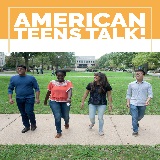 American Teens Talk! American Teens Talk!
Americans Teens Talk! is a collection of interviews of
American high school students. Each interview is accompanied by vocabulary
notes and discussion questions. The interviews in American Teens Talk! give
learners a view into the lives of adolescents in the U.S. Through the
written format of the interviews, learners are able to increase their
vocabulary, practice their reading and listening skills, engage in
discussions, and learn more about U.S. culture. These
interviews come with audio programs.
Great English listening and
reading |
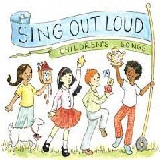 Sing Out Loud Children's Songs Sing Out Loud Children's Songs
Sing Out Loud Children's Songs includes popular children's songs in the U.S.A. Posters accompany the
individual Sing Out Loud Children's Songs. These
songs come with audio programs.
Great English listening and reading
practice. |
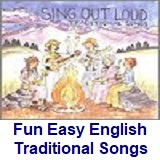 Sing Out Loud Traditional Songs Sing Out Loud Traditional Songs
The Sing Out Loud Traditional Songs
collection contains 13 traditional American folk songs and song lyrics.
Listen to the songs online, read the lyrics, and collect the posters that
accompany the songs. These
songs come with audio programs.
Great English listening and reading
practice. |
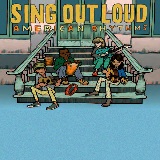 Sing Out Loud American Rhythms Sing Out Loud American Rhythms
Do you love music? Want to use it
to learn English? Check out the hip-hop inspired song "Peace" from Sing Out
Loud American Rhythms. American Rhythms includes a variety of musical genres
from many different artists in the U.S.A. These songs will appeal to teens
and young adults. These
songs come with audio programs.
Great English listening and reading
practice. |
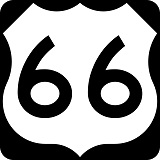 Route
66 - Famous American Road Route
66 - Famous American Road
U.S. Route 66 (US 66 or Route 66), also known as the Will Rogers Highway, the
Main Street of America or the Mother Road, was one of the original highways in
the U.S. Highway System. The highway, which became one of the most famous roads
in the United States, originally ran from Chicago, Illinois, through Missouri,
Kansas, Oklahoma, Texas, New Mexico, and Arizona before ending in Santa Monica,
California, near Los Angeles, covering a total of 2,448 miles (3,940 km). It was
recognized in popular culture by both the hit song "(Get Your Kicks on) Route
66" and the Route 66 television show in the 1960s. |
Route 66: The Highway That's the Best
(Beginner - Listening)
A video lesson which shows you an interesting place in America.
The English is
spoken at 75% of normal speed.
Great English listening practice.
This video shows travel along Route 66, the most famous road in
America. |
Chicago: The Start of Route 66
(Beginner - Listening)
A video lesson which shows you an interesting place in America.
The English is
spoken at 75% of normal speed.
Great English listening practice.
This video shows travel along Route 66, the most famous road in
America. |
Going West for Decades on Route 66
(Beginner - Listening)
A video lesson which shows you an interesting place in America.
The English is
spoken at 75% of normal speed.
Great English listening practice.
This video shows travel along Route 66, the most famous road in
America. |
Arizona: The Spirit of Route 66
(Beginner - Listening)
A video lesson which shows you an interesting place in America.
The English is
spoken at 75% of normal speed.
Great English listening practice.
This video shows travel along Route 66, the most famous road in
America. |
Route 66 California: The End of the Trail
(Beginner - Listening)
A video lesson which shows you an interesting place in America.
The English is
spoken at 75% of normal speed.
Great English listening practice.
This video shows travel along Route 66, the most famous road in
America. |
Ten Must-See Route 66 Attractions
(Beginner - Listening)
A video lesson which shows you an interesting place in America.
The English is
spoken at 75% of normal speed.
Great English listening practice.
This video shows travel along Route 66, the most famous road in
America. |
Four Famous Foods On Route 66
(Beginner - Listening)
A video lesson which shows you an interesting place in America.
The English is
spoken at 75% of normal speed.
Great English listening practice.
This video shows travel along Route 66, the most famous road in
America. |
International Tourists Drawn to Route 66
(Beginner - Listening)
A video lesson which shows you an interesting place in America.
The English is
spoken at 75% of normal speed.
Great English listening practice.
This video shows travel along Route 66, the most famous road in
America. |
|
|
|
|
Search Fun Easy English |
|
|
|
|
|
|
|
|
|
|
|
|
|
|
|
About
Contact
Copyright
Resources
Site Map |